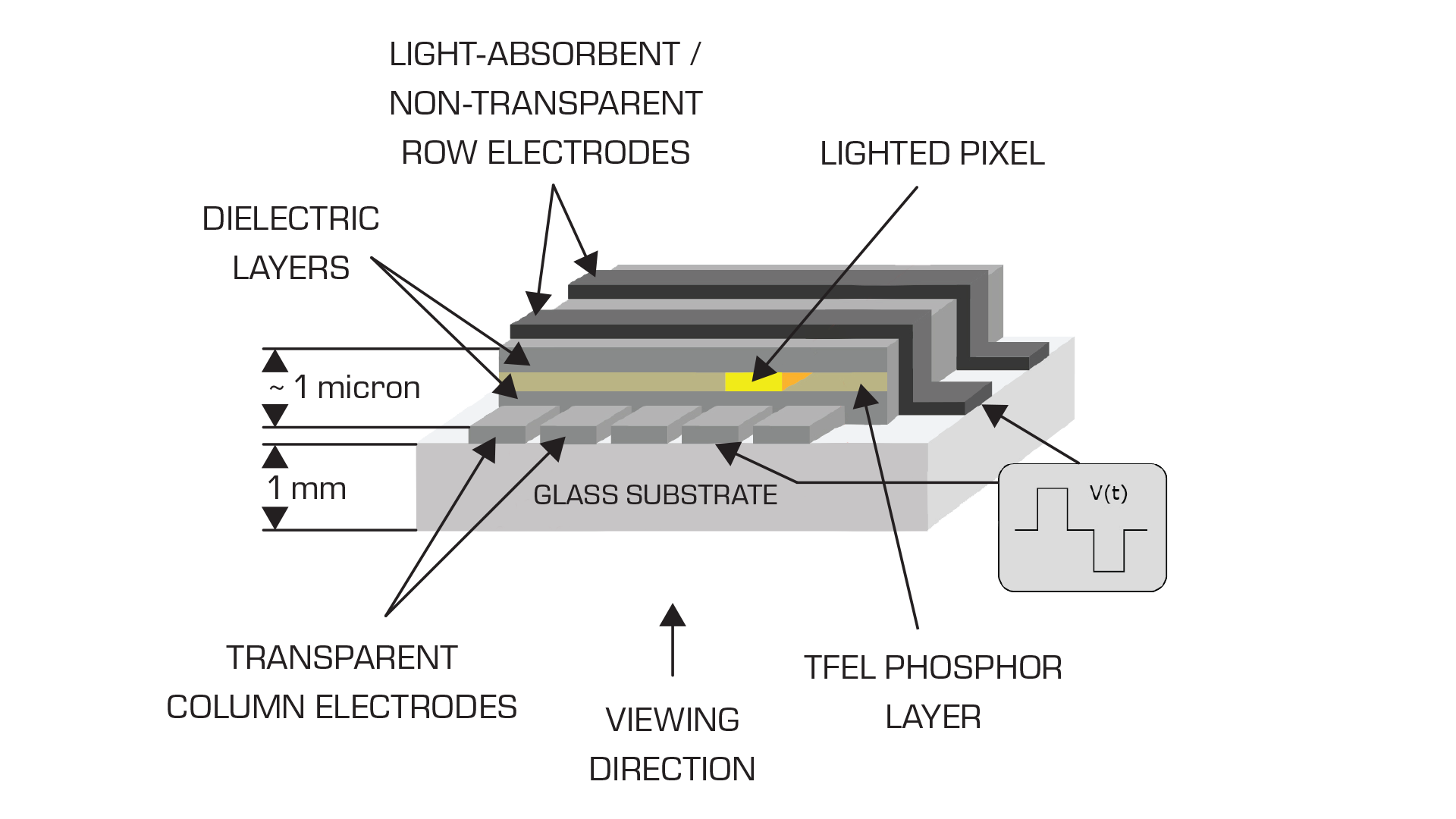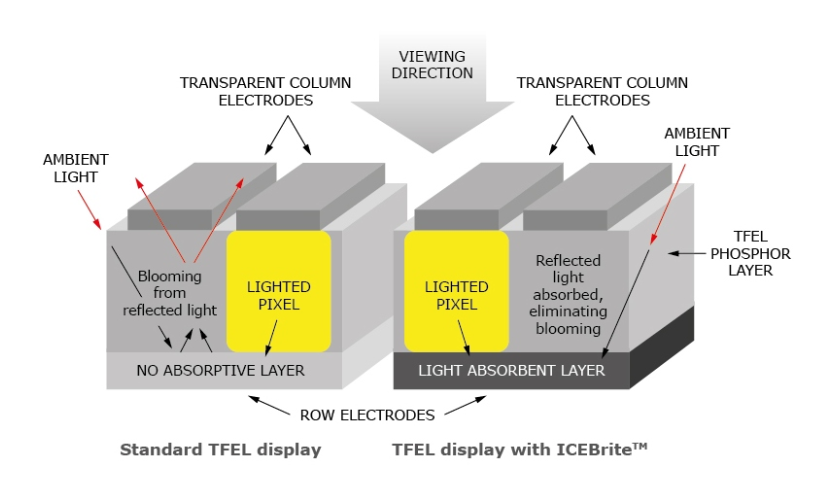Lumineq® Thin Film Electroluminescent (TFEL) displays comprise a solid-state glass panel, an electronic control circuit and a power supply. The TFEL glass panel, the heart of the assembly, consists of a luminescent phosphorous layer sandwiched between transparent dielectric layers and a matrix of row and column electrodes.
Our rugged displays use one layer of the transparent electrode and the other layer of non-transparent electrode. When both electrodes layers are transparent, the display is transparent and the transparency is over 80%.
The circuit board, which contains the drive and control electronics, is connected directly to the back of the glass panel. A pixel on the display is lit by applying voltage to the row and column electrodes, thus causing the area of intersection to emit light.

The result of this compact and solid-state design is a flat, reliable and inherently rugged display with exceptionally fast response time of less than 1 ms, regardless of temperature.
Read the history of Electroluminescent displays by Materiability Research Group.
Thin Film Electroluminescent (TFEL) display technology is unique and unrivaled for embedded display solutions. The combined performance and visual characteristics of TFEL displays make them superior in the most challenging and demanding applications, where other technologies simply cannot deliver. Equipment and system designers today are using TFEL displays to fulfill the increasing demands of their customers for image quality, product lifetime and reliability.
Over the last 30 years, TFEL technology has proven its excellence in applications ranging from monitor and control instruments in deep-sea vessels to operational systems in orbital spacecraft. Besides these extremes, TFEL displays have found their way into countless other applications, where uncompromised reliability and accuracy are required.
Lumineq TFEL displays exhibit the widest operating temperature range of any commercially available technology. The TFEL glass itself can operate down to -100 °C (-148 °F), whereas TFEL modules are rated as low as -60 °C (-76 °F) without any decrease in response time. The graph below displays the differences between TFEL and TFT. The operating temperature of a TFEL display surpasses that of both wide temperature TFTs and automotive temperature range TFTs, without losing response or clarity of view.

Lumineq’s ICEBrite™, which stands for Integral Contrast Enhancement, offers unparalleled image quality in a wide range of challenging visual conditions (see schematic below). ICEBrite technology delivers up to 1000:1 contrast ratio for daylight readability.

LUMINEQ is a registered trademark of Beneq Oy. ICEBrite is a trademark of Beneq Oy.
Subscribe to our newsletter and get updates on the latest display technologies and industry trends.